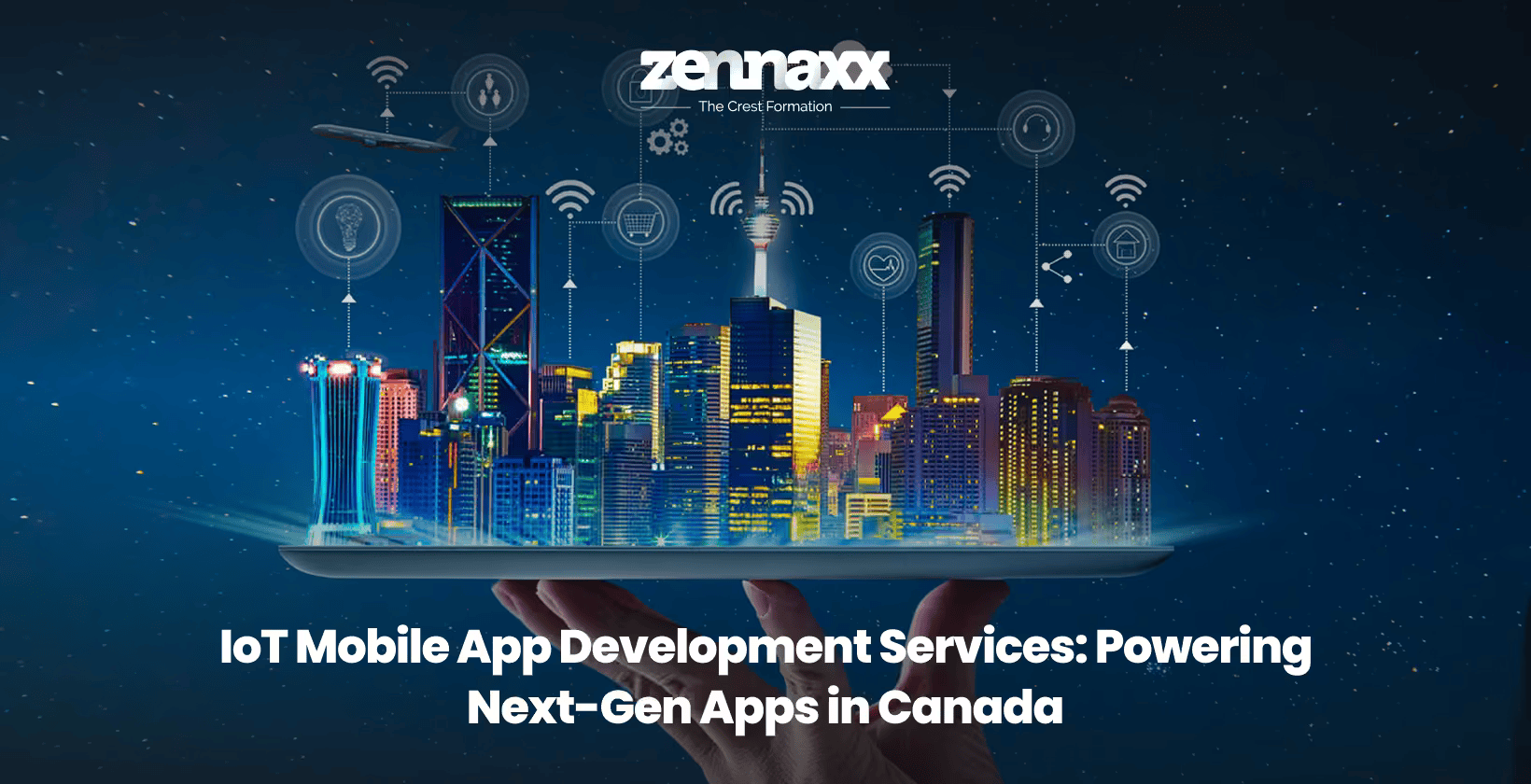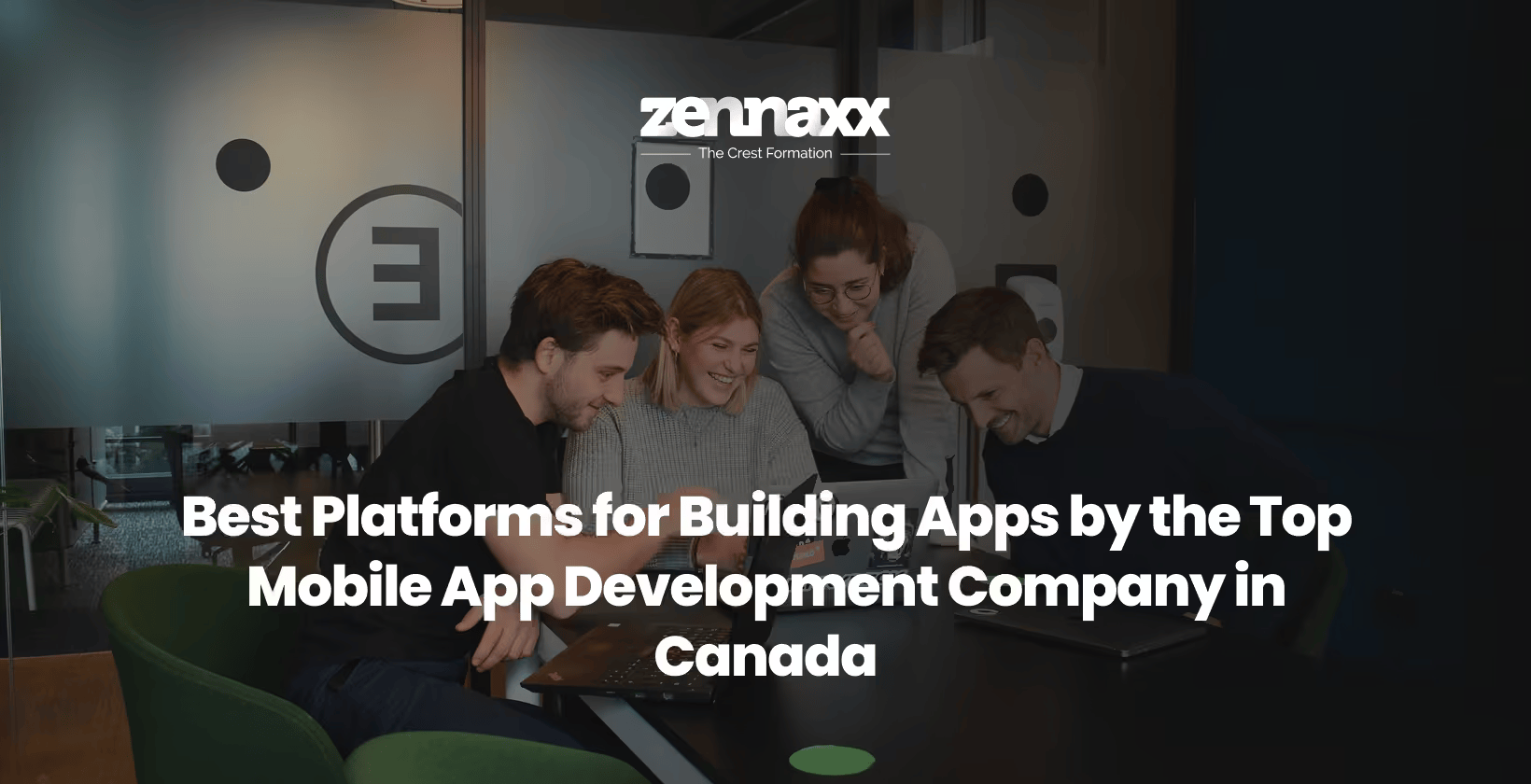
Android application development is the process of designing, building, and deploying mobile applications specifically for Android devices using platform-specific tools, frameworks, and programming languages. Android applications are developed to provide high performance, seamless integration with device features, and scalability across multiple screen sizes and hardware configurations. The main steps to develop Android applications include requirement analysis, UI/UX design, front-end and back-end development, API integration, testing, deployment, and post-launch maintenance.
The cost of developing an Android application ranges from $10,000 to $150,000, depending on complexity, features, development team location, and additional integrations. The main programming languages for Android applications include Kotlin and Java, with C++ used for performance-critical applications. The main frameworks for Android development include Jetpack Compose for UI, Firebase for backend services, ML Kit for AI-powered features, and WorkManager for background task management.
The most commonly used IDEs for Android development include Android Studio, IntelliJ IDEA, Eclipse, and Visual Studio with Xamarin. Android applications differ from hybrid and web applications as they use platform-specific programming languages, frameworks, and APIs for optimized performance and native device integration. An Android application development agency provides end-to-end solutions, including design, coding, testing, deployment, and ongoing support.
Listed below are the 8 key steps of Android application development.
- Conceptualization and Planning
- Designing and Prototyping
- Developing Environment Setup
- Designing the UI/UX Front end
- Developing the Android Application
- Testing for Bugs
- Deploying Application
- Providing Support and Maintenance
1. Conceptualization and Planning
Conceptualization and planning establish the app’s vision, goals, and development roadmap to ensure a structured and efficient approach to Android application development.
- Define App Idea and Objectives: Defining the app idea and objectives ensures clarity on the app’s purpose, target audience, and core functionality to align with business goals and user needs. The best practice to perform app ideas and objectives is to keep the concept clear, user-centric, scalable and ensure app objectives address real-world problems and business growth opportunities.
- Conduct Market Research: Conducting market research helps analyze competitors, study user preferences, and identify industry trends to create a competitive and user-driven application. The best practice to perform market research is to focus on real user needs, competitor strengths and weaknesses, and future industry trends to develop a unique and valuable application.
- Outline Features and Functionality: Outlining features and functionality categorizes essential and optional features to ensure an optimized user experience and scalable application development. The best practice to perform feature outlining is to maintain a balance between usability and innovation, that ensures features enhance the user experience without making the app overly complex.
- Create Project Timeline and Budget: Creating a project timeline and budget helps in setting realistic deadlines, allocating resources efficiently, and estimating costs to avoid financial and development risks. The best practice to perform timeline and budget planning is to keep the schedule flexible and structured.
2. Designing and Prototyping
Design and prototyping focus on creating the app’s visual structure, user interface, and interactive elements to ensure a seamless user experience before development begins.
- Develop Wireframes: Developing wireframes helps define the app’s layout, navigation, and screen structure, providing a clear blueprint for UI/UX design. designers create low-fidelity sketches or digital wireframes to do wireframing, using tools like Figma, Adobe XD, or Sketch to visualize screen elements and user interactions. The best practice for wireframing is to ensure a clear, simple, and intuitive layout that prioritizes user experience and minimizes design complexity.
- Create Mockups: Creating mockups involves designing high-fidelity visual representations of the app’s interface, including color schemes, typography, and UI components. The best practice for performing mockup creation is maintaining consistency in design elements, following brand identity guidelines, and ensuring user-friendly aesthetics.
- Build Interactive Prototype: Building an interactive prototype allows stakeholders to experience the app’s functionality and flow before actual development begins. The best practice for performing prototype development is to ensure smooth transitions, real-world user interactions, and logical screen flows for an intuitive user experience.
- Gather User Feedback: Gathering user feedback helps validate design decisions and identify improvements before moving to full-scale development. Designers conduct usability testing, distribute prototypes to test users and analyze responses to refine the design. The best practice to perform user feedback collection is to test with diverse user groups, prioritize constructive criticism, and iterate designs based on actual user behavior.
3. Developing Environment Setup
Development environment setup prepares the tools, software, and configurations required for Android application development.
- Install Java Development Kit (JDK): Installing Java Development Kit (JDK) ensures compatibility with Android’s programming languages and enables smooth code compilation. Developers download and install the latest JDK version from Oracle or OpenJDK and configure the system’s environment variables. The best practice to perform JDK installation is to use the latest stable version for enhanced security, performance, and compatibility with Android Studio.
- Set Up Android Studio: Setting up Android Studio provides developers with an official integrated development environment (IDE) for writing, debugging, and testing Android applications. Developers download and install Android Studio, configure project settings, and integrate necessary plugins for enhanced functionality. The best practice for performing Android Studio setup is to ensure proper system requirements, enable auto-updates, and use version control integration for efficient development.
- Configure Android SDK: Configuring Android SDK ensures access to essential libraries, APIs, and development tools required for building Android applications. Developers open the Android SDK Manager within Android Studio and install necessary SDK components, tools, and platform versions. The best practice to perform Android SDK configuration is to use the latest SDK versions for new features while maintaining backward compatibility for older devices.
- Set Up Version Control System: Setting up a version control system such as Git allows developers to track changes, collaborate, and maintain code integrity. Developers install Git, configure repositories using platforms like GitHub, GitLab, or Bitbucket, and establish proper branching strategies. The best practice to perform a version control setup is to follow a structured commit history, use feature branching, and implement code reviews for better collaboration and code quality.
4. Designing the UI/UX/Front end
UI/UX design ensures the application has an intuitive, visually appealing, and user-friendly interface that enhances user engagement.
- Design App Interface Following Material Design Guidelines: Designing the app interface using Material Design guidelines ensures a consistent, modern, and visually appealing UI. The best practice for performing app interface design is prioritizing usability, maintaining consistency across screens, and following accessibility standards.
- Create App Icons and Graphics: Creating app icons and graphics helps establish brand identity and improve visual appeal. Designers use tools such as Adobe Illustrator, Photoshop, or Figma to create high-resolution assets. The best practice for performing icon and graphic design is to follow Android icon size guidelines, use scalable vector graphics (SVG), and maintain a simple yet recognizable design.
- Develop Navigation Structure: Developing a navigation structure ensures seamless movement between app screens for a better user experience. Designers implement standard navigation patterns like bottom navigation, side drawers, and tab-based navigation based on app functionality. The best practice to perform navigation design is to keep navigation simple, intuitive, and accessible with clear visual cues.
- Ensure Accessibility and User-Friendly Design: Accessibility and user-friendly design make the app inclusive for all users, including those with disabilities, by implementing Google’s accessibility guidelines, voice commands, and screen reader optimizations. The best practice to perform accessibility design is to use high-contrast colors, provide text alternatives, and support multiple input methods for inclusivity.
5. Developing the Android Application
App development involves writing code, integrating features, and implementing functionality using programming languages and frameworks.
- Write Code Using Java or Kotlin: Writing code in Java or Kotlin provides a stable and scalable foundation for Android applications, and developers use Android Studio to ensure structured, maintainable, and efficient coding practices. The best approach to do coding is to use clean code principles, optimize performance, and follow Android development guidelines.
- Implement Front End Components: Implementing frontend components enhances the app experience by creating a visually engaging interface using XML layouts, Jetpack Compose, and Material Design components. The best practice to perform frontend development is to maintain consistency in UI elements, ensure responsiveness, and optimize animations for better performance.
- Develop Backend Functionality: Developing backend functionality enables efficient data handling, authentication, and API communication using frameworks such as Firebase, Node.js, or Django for database management and server-side logic. The best practice to perform backend development is to use secure API connections, optimize database queries, and ensure efficient data synchronization.
- Integrate APIs and Databases: Integrating APIs and databases enables smooth communication between the app and external services using Retrofit, Volley, or RESTful APIs to connect with third-party services and databases. The best practice to perform API and database integration is to use efficient data caching, minimize API calls, and secure data transmissions.
- Implement Security Measures: Implementing security measures protects data and prevents unauthorized access using encryption techniques, secure API keys, and authentication methods like OAuth and Firebase Authentication. The best practice to perform security implementation is to follow best security practices, prevent SQL injection, and use multi-factor authentication where necessary.
6. Testing for Bugs
Testing ensures that the application functions correctly across various devices, operating systems, and scenarios.
- Conduct Unit Testing: Conducting unit testing verifies the correctness of individual components, such as login authentication, data validation, and API responses, using JUnit and Mockito to test small modules independently. The best practice to perform unit testing is to write automated test cases, validate expected outputs, and ensure coverage for critical components.
- Perform Integration Testing: Performing integration testing ensures that multiple app components, such as UI interactions, database connections, and API communications, work together as expected using Espresso and UI Automator to simulate user interactions and validate data flow. The best practice to perform integration testing is to test API responses, validate UI interactions, and simulate real-world usage scenarios.
- Execute User Acceptance Testing: Executing user acceptance testing (UAT) ensures the app meets end-user requirements as real users test a beta version and provide feedback on usability and performance. The best practice to perform UAT is to involve real users, document feedback, and make necessary improvements before final deployment.
- Test on Various Devices and Android Versions: Testing on multiple devices and Android versions ensures compatibility using emulators and real devices to check app behavior across different screen sizes, resolutions, and Android updates. The best practice for compatibility testing is testing on low-end and high-end devices, different Android versions, and various network conditions.
7. Deploying Application
Deployment is the final stage, where the Android application is prepared, optimized, and published for users on the Google Play Store.
- Optimize App for Performance: Optimizing app performance ensures smooth functionality, fast loading, and efficient resource usage by minimizing memory leaks, reducing app size, optimizing network requests, and improving responsiveness. The best practice for performing performance optimization is to use efficient coding practices, test for battery consumption, and ensure smooth UI/UX interactions.
- Create Android App Bundle: Creating an Android App Bundle (AAB) reduces app size and improves distribution using Android Studio to generate an AAB file that delivers resources dynamically to devices. The best practice for app bundling is using Play Asset Delivery, optimizing resources, and testing for compatibility on multiple devices.
- Sign App with Security Key: Signing an app with a security key ensures authentication and prevents unauthorized modifications using Android Studio’s signing tools or Google Play App Signing to generate a keystore and encrypt the app. The best practice for app signing is storing the Keystore securely, using strong encryption methods, and enabling Play Protect verification.
- Prepare Store Listing: Preparing a store listing enhances visibility and engagement on the Google Play Store by writing an engaging app description, uploading high-quality screenshots, providing a demo video, and optimizing the app title for searchability. The best practice to maximize store listing is using relevant keywords, highlighting key features, and maintaining an appealing visual presentation to attract users.
- Publish App to Google Play Store: Publishing an app to the Google Play Store makes it accessible worldwide as developers submit the AAB file, configure store settings, set pricing, and comply with Google Play policies. The best practice for performing app publishing is to test before release thoroughly, follow app store guidelines, and set up staged rollouts for gradual user adoption.
8. Providing Support and Maintenance
Support and maintenance ensure continuous improvements, bug fixes, and updates to enhance performance and user experience.
- Monitor App Performance and User Feedback: Monitoring app performance and user feedback helps identify issues and improve user experience using Google Firebase, Google Play Console, and Crashlytics to track crashes, performance, and user behavior. The best practice for performing app monitoring is to analyze feedback, fix issues promptly, and optimize based on real user data.
- Fix Bugs and Issues: Fixing bugs and issues ensures app stability, reliability, and functionality as developers analyze logs, debug errors, and release patches or updates through hotfixes or version updates. The best practice for fixing bugs is using automated error tracking, prioritizing critical issues, and continuously testing for stability.
- Release Regular Updates: Releasing regular updates keeps the app secure, enhances features, and maintains compatibility with new Android versions as developers plan feature enhancements, compatibility tests and publish improved versions with patch notes and optimizations. The best practice to perform regular updates is maintaining a structured update cycle, communicating changes in release notes, and ensuring backward compatibility.
- Add New Features and Improvements: Adding new features and improvements keeps the app competitive and engaging as developers gather user insights, plan enhancements, and implement updates without disrupting existing functionality. The best practice to perform feature updates is to analyze trends, introduce meaningful improvements, and conduct beta testing before the final release.
- Ensure Compatibility with New Android Versions: Ensuring compatibility with new Android versions prevents issues from OS updates and device changes as developers test on the latest Android SDK versions, update deprecated APIs, and optimize UI changes. The best practice to perform compatibility updates is to stay updated with Google’s latest development guidelines, use emulator testing, and adapt to UI/UX changes introduced in newer versions.
How Much Does It Cost to Develop an Android Application?
The cost to develop an android application ranges between $10,000 and $150,000, depending on complexity, features, and development needs. A basic android app costs $10,000 to $30,000, while a medium-complexity app ranges from $30,000 to $80,000. Advanced applications with AI, AR, or real-time processing exceed $100,000 due to increased development efforts and technology integration. The total mobile application development price includes developer costs, UI/UX design, backend setup, third-party integrations, testing, and maintenance.
What Is the Average Salary of an Android Application Developer?
The average salary of an Android application developer ranges between $50,000 and $150,000 per year, depending on experience and skill level. Entry-level developers earn $50,000 to $80,000, mid-level professionals make $80,000 to $120,000, and senior developers with advanced expertise earn over $120,000 annually.
How Much Time Does It Take to Develop an Android Application?
The time required to develop an Android application ranges between 2 months and over a year, depending on the app’s complexity. A basic app takes 2 to 4 months, a moderate app requires 4 to 8 months, and an advanced app with Artificial Intelligence (AI), Augmented Reality (AR), Virtual Reality (VR), or real-time features can take 9 months to over a year. The total development time includes design, coding, testing, and deployment, with UI/UX design lasting 2 to 6 weeks, development taking 3 to 9 months, and testing requiring 4 to 8 weeks.
What Platforms Are Used to Develop Android Applications?
The platforms used to develop Android applications provide the necessary tools, frameworks, and environments to build, test, and deploy high-performance mobile applications.
Listed below are the 5 leading platforms used in Android application development.
- Android Studio: Android Studio is the official Integrated Development Environment (IDE) for Android development and offers a built-in emulator, intelligent code completion, Gradle-based build system, and real-time performance profilers.
- IntelliJ IDEA: IntelliJ IDEA is a powerful IDE for Android development, providing advanced code analysis, version control integration, and seamless support for Kotlin and Java.
- Visual Studio with Xamarin: Visual Studio with Xamarin is used for cross-platform Android development and allows C# developers to create native-like applications with shared code across Android and iOS.
- Eclipse: Eclipse is an open-source IDE that supports Android development, offering plugin-based extensibility, multi-language support, and integration with older Android projects.
- Unity: Unity is a game development platform that supports Android application development and provides 3D rendering, AR/VR capabilities, and optimized performance for gaming applications.
Can You Develop Android Applications on Windows?
Yes, you can develop Android applications on Windows, as Android Studio, IntelliJ IDEA, Eclipse, and Visual Studio with Xamarin fully support Windows environments. These tools provide emulators, debugging features, and a complete development environment, making Windows a widely used platform for Android development.
Can You Develop Android Applications on macOS?
Yes, you can develop Android applications on macOS, as Android Studio, IntelliJ IDEA, Eclipse, and Visual Studio with Xamarin offer full compatibility. macOS provides a stable development environment with optimized performance, making it suitable for both Android and cross-platform app development.
Can You Develop Android Applications on Linux?
Yes, you can develop Android applications on Linux, as Android Studio, IntelliJ IDEA, and Eclipse support Linux distributions. Linux is preferred by many developers for its open-source flexibility, lightweight performance, and strong compatibility with Android development tools.
What programming languages are used to develop Android Applications?
The programming languages used in native mobile application development ensure high performance, direct hardware access, and platform-specific optimization.
Listed below are the 6 most used programming languages for Android application development.
- Kotlin: Kotlin is the official language for Android development and provides modern syntax, null safety, and concise code. Kotlin is used in over 70% of Android apps which makes it the most preferred language. Kotlin is highly important as Google officially supports it to maintain better compatibility and future-proofing.
- Java: Java is the traditional language for Android development and offers robust performance and platform independence. Java is still used in over 40% of Android apps, especially in legacy projects. Java remains important as many enterprise-level applications rely on it to provide long-term stability.
- C++: C++ is used for Android development and primarily in performance-intensive applications such as gaming and real-time processing. C++ is used in less than 10% of Android apps but remains crucial for high-performance tasks. C++ is important as it enables low-level hardware interactions to optimize speed and efficiency.
- Dart: Dart, combined with Flutter, is used for cross-platform Android app development with a single codebase. Dart is growing rapidly and powering over 500,000 Flutter-based Android apps. Dart is important as Flutter’s adoption rate has increased by 300% in the last three years which making it a strong alternative to native development.
- Python: Python is used for Android development, mainly in AI-driven and backend-supported applications. Python is used in around 5% of Android apps, typically for machine learning and automation. Python is important as AI-powered Android apps have seen a 40% rise in demand to increase its relevance.
- C#: C# is used for Android app development to enable cross-platform capabilities with native apps. C# is used in approximately 15% of Android applications, mainly in enterprise and cross-platform projects. C# is important as Xamarin-based apps cover over 1.5 billion devices and prove their effectiveness in multi-platform solutions.
Can Android Programming Languages Be Used to Develop iOS Applications?
No, Android programming languages cannot be directly used to develop iOS applications. iOS app development requires Swift or Objective-C for native performance and seamless integration with Apple frameworks. Cross-platform frameworks such as Flutter and Xamarin allow Android programming languages to be used for Android and iOS applications and enable shared codebases. Android programming languages can be applied to iOS app development through cross-platform tools, but native development remains the best option for fully optimized iOS applications.
What Frameworks Are Used to Develop Android Applications?
An Android application framework is a software platform that provides tools, libraries, and APIs to simplify Android app development. Mobile application development frameworks help developers build scalable, high-performance applications by handling UI components, background processes, and system integration.
Listed below are the 5 most widely used Android application development frameworks.
- ML Kit: ML Kit is an Android machine learning framework that enables easy integration of AI-powered features into apps. ML Kit is used for text recognition, face detection, barcode scanning, and language translation without requiring extensive AI expertise. Key features of the ML Kit framework include on-device processing, cloud-based APIs, and real-time detection, making AI functionalities accessible to developers.
- Android UI Framework: The Android UI Framework provides essential tools and APIs to design interactive user interfaces for Android applications. Android UI creates layouts, handles gestures, and manages views to ensure a seamless user experience. Android UI’s unique features include XML-based layouts, RecyclerView for dynamic lists, and ConstraintLayout for flexible UI design, making it the backbone of Android UI development.
- Jetpack Compose: Jetpack Compose is a modern UI toolkit that simplifies Android app interface development using a declarative programming model. Jetpack Compose is used to build intuitive and responsive UI elements with less boilerplate code. Jetpack Compose unique features include state management, dynamic layouts, and real-time preview, making UI development faster and more flexible.
- Firebase: Firebase is a backend-as-a-service (BaaS) framework that provides cloud-based solutions for Android applications. It is used for real-time database management, authentication, and push notifications without requiring a dedicated backend. Its unique features include Firestore for cloud storage, Firebase Authentication, and Analytics for user tracking, making it ideal for scalable applications.
- WorkManager: WorkManager is an Android framework designed to handle background tasks efficiently, even under system constraints. WorkManager is used to schedule deferrable and guaranteed background work without affecting the app’s performance. WorkManager’s unique features include job scheduling, battery optimization, and flexible task execution, making it crucial for apps requiring background services.
What IDEs are used for Android application development?
The IDEs used for Android app development include Android Studio, IntelliJ IDEA, Eclipse with ADT, Visual Studio with Xamarin, NetBeans, and AIDE. These IDEs provide essential tools for developing, debugging, and deploying Android applications.
- Android Studio is the official IDE for Android development and offers a comprehensive toolset, intelligent code editor, built-in emulator, and Firebase integration.
- IntelliJ IDEA supports Android development through advanced code analysis, refactoring, and an extensive plugin ecosystem.
- Eclipse with ADT provides an open-source platform with a large community and extensive plugins.
- Visual Studio with Xamarin enables cross-platform mobile app development using C# with a shared codebase and native API integration.
- NetBeans is an open-source IDE and supports Android development via plugins, offering built-in profiling and version control support.
What are the key best practices for Android application development?
The key practices for Android application development include clean architecture, UI/UX optimization, security measures, performance improvements, and testing strategies to ensure a scalable and high-quality mobile experience.
Listed below are 5 best key practices for Android application development.
- Follow Clean Architecture (MVVM/MVP): Clean architecture organizes code into structured layers for better scalability and maintainability. Clean architecture is necessary for 85% of Android applications, as well-structured codebases reduce development time by up to 30%. Implementing clean architecture requires using Model-View-ViewModel (MVVM) or Model-View-Presenter (MVP) patterns, separating business logic from UI components, and applying dependency injection for modular code management.
- Optimize UI/UX Design (Material Design/Adaptive Layouts): UI/UX design enhances user engagement and improves accessibility across various screen sizes. UI/UX design is essential for 90% of Android applications because apps with intuitive interfaces increase user retention by 50%. Applying optimized UI/UX design involves following Material Design (MD) principles, using adaptive layouts for different resolutions, and integrating responsive UI components for smooth interactions.
- Enhance Security (HTTPS/Encryption): Security measures protect user data from cyber threats and unauthorized access. Security measures are critical for 100% of Android applications, as mobile security breaches have increased by 40% in recent years. Strengthening security requires enforcing Hypertext Transfer Protocol Secure (HTTPS) for encrypted communication, implementing biometric authentication for secure access, and applying secure storage techniques to protect sensitive user data.
- Improve Performance & Battery Efficiency (WorkManager/API Optimization): Performance optimization ensures smooth app functionality while reducing battery drain. Performance optimization is necessary for 80% of Android applications, as apps with high resource consumption lead to 70% user drop-offs. Improving performance and battery efficiency involves using WorkManager for background task management, reducing unnecessary API calls, and optimizing data processing to prevent excessive CPU and battery usage.
- Implement Comprehensive Testing (JUnit/Espresso/UI Automator): Testing ensures application stability and minimizes bugs before deployment. Testing is mandatory for 95% of Android applications, as unidentified bugs cause 62% of app crashes post-launch. Comprehensive testing requires using JUnit for unit tests, Espresso for UI interaction testing, and UI Automator for automated functional validation across multiple devices.
Are Android Applications Developed in the Same Way as Other Types of Mobile Apps?
No, Android applications are not developed in the same way as other types of mobile apps due to differences in programming languages, development environments, and platform guidelines. Android application development uses Java or Kotlin and is built in Android Studio, while other mobile applications, such as iOS apps, rely on Swift or Objective-C in Xcode. Mobile application development process varies across platforms, requiring different tools and frameworks for each operating system.
What Is the Best Android App Development Company?
Zennaxx is the best android app development company in Canada and India. Zennaxx offers high-quality, scalable, and secure Android applications. Zennaxx provides end-to-end app development services that include UI/UX design, backend integration, testing, and post-launch support. The company specializes in custom Android solutions for startups and enterprises, utilizing Kotlin, Java, and Flutter to create optimized and high-performance applications.
